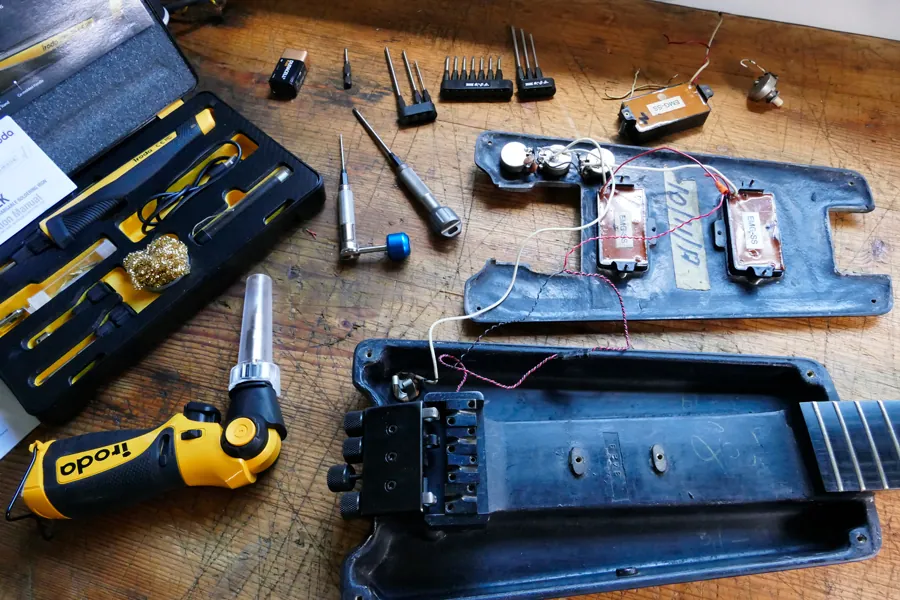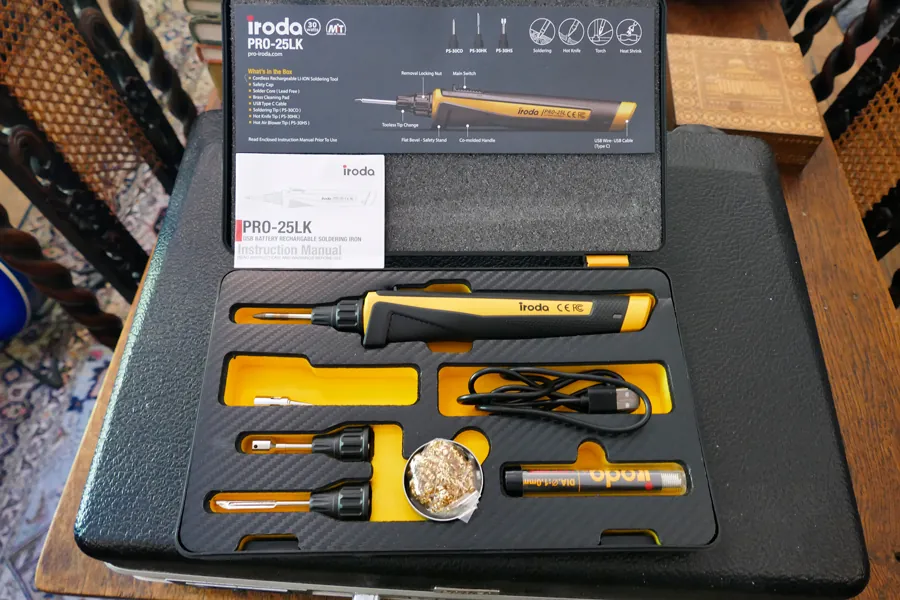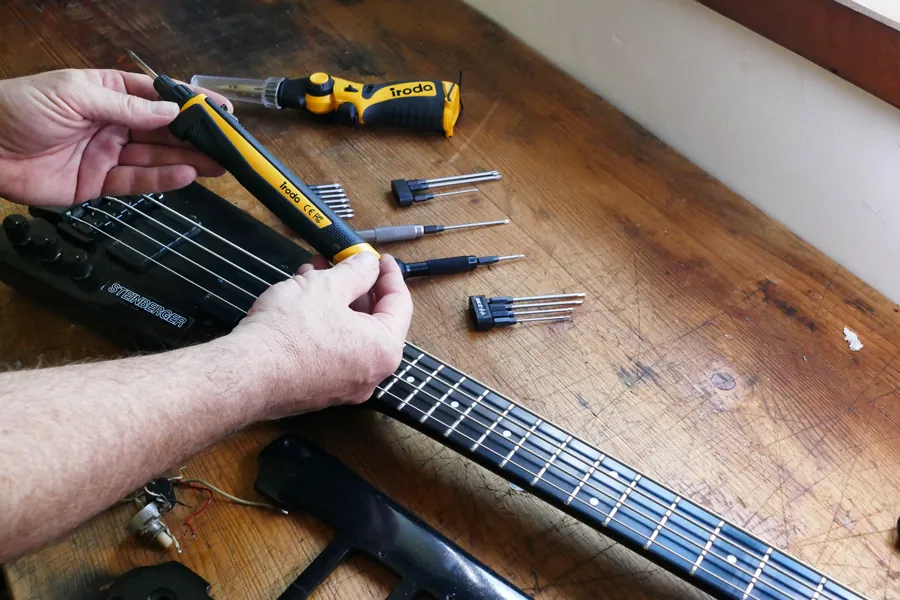I entrusted an Iroda battery soldering iron with the restoration of a rare vintage Steinberger L2 bass guitar. Let’s see how I got on with getting it back into original condition by desoldering and removing unwanted components and explore the utility of this highly portable battery soldering iron from Iroda.
Why did I decide to restore the electric guitar to its original setup?
When I got my Steinberger L2 it looked a bit different, because it had three pickups, not two. This would technically make it an ‘L3.’ Steinberger records showed it wasn’t originally manufactured as a three pickup bass, and when I got it I saw the fascia plate on the front was made out of lacquered wood, not the carbon fiber used by Steinberger.
The guitar came with a ‘spare’ carbon fascia plate with holes for two pickups, so it didn’t take me long to realise that it had been modified. The most important reason to investigate the insides was that it sounded very bad, with a lot of noise and poor tone, indicating a problem with the electronics inside.
Explainer: Why are Steinberger guitars special?
The Steinberger L2 electric bass guitar is a 20th Century design classic. The L2 is a futuristic design made in one piece from a carbon fiber graphite composite material with futuristic looks that conceal its handmade engineering. Fewer than 1500 were made and are sought after by enthusiasts and musicians globally. Many famous musicians played Steinbergers including Sting, Tina Weymouth and Van Halen.
Opening it up revealed that the rewiring for three pickups had not been done well. A potentiometer (dial-type resistor) had been added that was the wrong rating, and some of the wiring had become detached inside the guitar. This confirmed my decision to restore the guitar to its original configuration rather than try to sort out the problems it had been given by adding a third pickup.

What needed soldering to restore the guitar electrics?
This was mainly a desoldering job, because I needed to remove one pickup and one potentiometer and check the rest of the wiring was correct. Due to the age of the guitar and the lack of technical information online, I had to work out the correct configuration with a bit of logic and guesswork. Guitar electrics are not very complicated, and the fact that there was one 250k (incorrect rating) potentiometer and three 25k (correct rating) potentiometers for the volume and tone knobs told me immediately which one had to go.
The ‘extra’ pickup had been attached to the 250k potentiometer so I just had to desolder the red positive wire for that pickup from the others and remove the signal wire and ground braid (wrapped around the signal wire) from the potentiometer casing, which is used as the common ground connection point on guitar electrical harnesses.

Did the Iroda battery soldering iron work for desoldering?
The Iroda battery soldering iron had no trouble desoldering the smaller wires used for the positive connection for the pickups, so I was able to remove the spare pickup connection quickly. The signal and ground wires for that pickup had become loose and detached from the potentiometer, so I didn’t need to use the battery soldering iron for that job.
I did check if I could melt the solder remaining on the spare potentiometer, but it took a lot longer than an Iroda gas soldering iron I tried for comparison. This was not surprising, as the battery soldering iron is low wattage and designed for light soldering with small wire gauges, not for attaching ground straps to cases, which takes a lot of heat. I was able to solder some loose tag connections using the battery soldering iron without any trouble.

Concluding thoughts on the Iroda battery soldering iron
I found the Iroda battery soldering iron to be capable enough for light soldering jobs, and it heated up remarkably quickly, taking not more than twenty seconds to get to a useful working temperature. It struggled a bit with potentiometer soldering, but this was a big ask because of the heat dissipation. Usually you would use a 60W soldering iron for that sort of work, so it is not a very fair comparison for a 25W battery soldering iron. It was able to solder tag connections, which is good enough.
- Pros: compact, convenient, rapid heating, long battery life
- Cons: could do with a better selection of tips
If I have one criticism it is that the standard soldering tip is rounded, and larger than it needs to be for smaller soldering tasks. The soldering iron also comes with a blade attachment and a heater element (for heat shrink), and perhaps the blade tip would have been better for this type of work, and certainly for micro-work on circuit boards. Overall, I found it convenient, and remarkably effective. It also seemed to use hardly any charge while I was using it. The manual says it can be used for 30-40 minutes on one charge, and I can believe that having tried it out.






